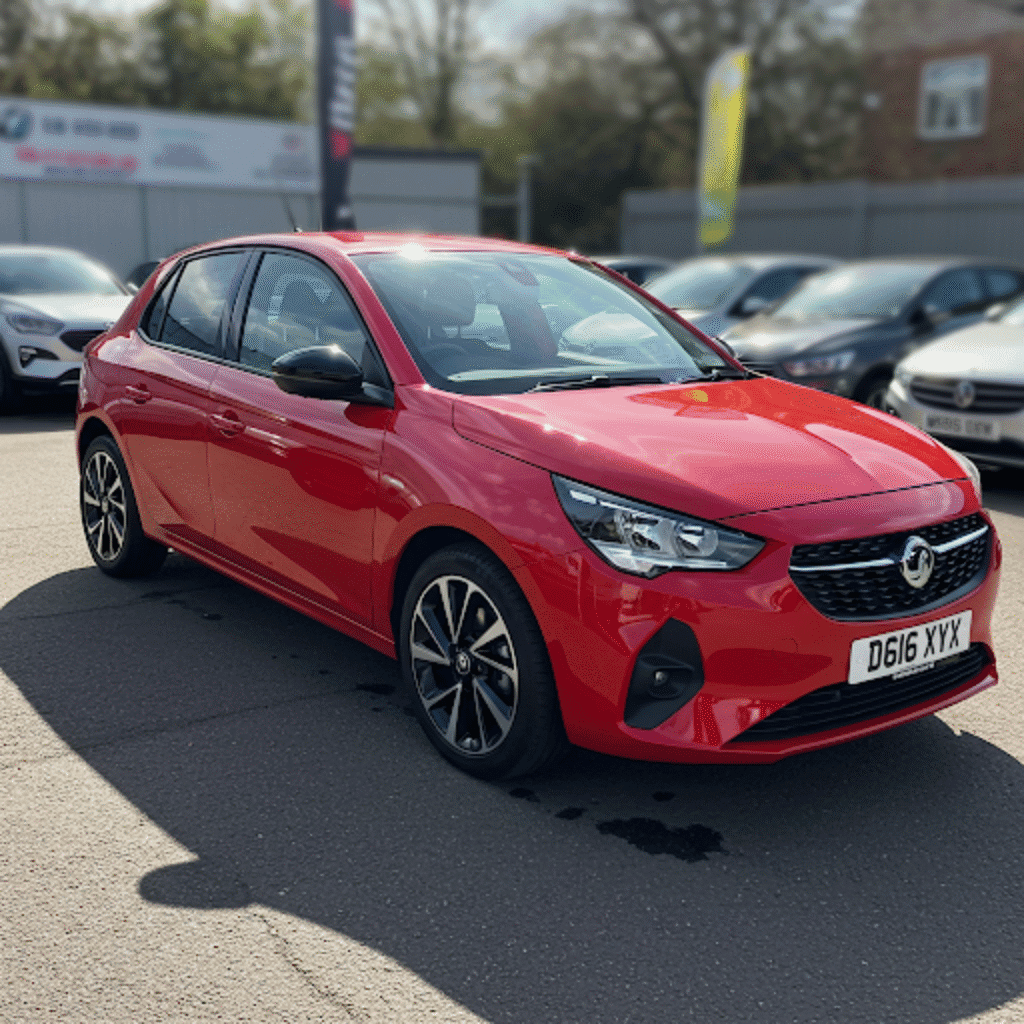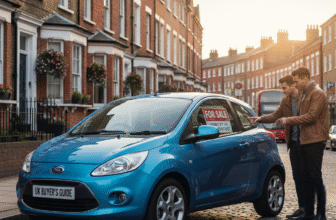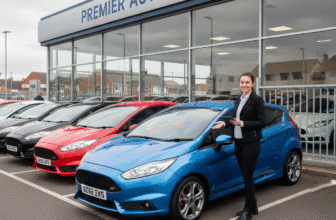
Finding Your Perfect Vauxhall Corsa for Sale: A Comprehensive UK Buyer’s Guide
Ah, the Vauxhall Corsa. If you’ve driven on UK roads for any length of time, you’ll have seen countless examples darting through city streets, cruising down motorways, or patiently waiting outside schools. It’s a car that’s become part of the fabric of British motoring, a household name synonymous with practicality, affordability, and accessibility. For decades, the Corsa has been a go-to choice for first-time drivers, seasoned commuters, small families, and pretty much everyone in between. Its enduring popularity means the used car market is brimming with options, making the search for a ‘Vauxhall Corsa for sale’ both exciting and potentially overwhelming.
Whether you’re taking your first tentative steps into car ownership, looking for an economical runaround, or considering the switch to electric with the Corsa-e, this guide is designed to navigate the journey. We’ll delve into the Corsa’s history, explore its different generations, highlight what makes it such a compelling choice, and crucially, provide practical advice on how to find, inspect, and purchase the right Corsa for your needs and budget right here in the UK.
Why Has the Corsa Remained So Popular?
The Corsa’s story began back in 1982, although it wore an Opel badge on the continent. It arrived in the UK under the Vauxhall brand shortly after, quickly establishing itself as a strong contender in the burgeoning supermini class. Over six generations (often labelled A through F), it has constantly evolved, adapting to changing driver demands, technological advancements, and stricter safety and emissions standards. For many years, Corsas were proudly built in Britain, further cementing their place in the nation’s heart, though production has since moved elsewhere under the Stellantis group (which also owns Peugeot, Citroën, Fiat, and others).

So, what’s the secret to its lasting success?
- Affordability: Corsas have always represented good value for money, both new and used. Purchase prices are generally competitive, and parts and servicing are widely available and reasonably priced.
- Low Running Costs: Insurance groups are typically low, especially for lower-spec models, making them ideal for younger drivers. Fuel efficiency has consistently improved across generations, and road tax (VED) is often minimal or even zero for certain models registered before April 2017 or newer, highly efficient ones.
- Ease of Driving: Light steering, compact dimensions, and good visibility make the Corsa incredibly easy to manoeuvre and park, particularly in tight urban environments.
- Wide Range: From basic entry-level models to sporty SRi versions and luxurious Elite Nav trims, there’s a Corsa specification to suit most tastes and budgets. Engine choices range from frugal petrols and diesels to the modern, punchy turbo petrols and the zero-emission electric Corsa-e.
- Availability: Its sheer popularity means there’s always a vast selection of used Corsas available nationwide, giving buyers plenty of choices.
- Familiarity: Many driving schools use Corsas, meaning countless drivers pass their test in one, creating a sense of familiarity and confidence when it comes to buying their own.
Navigating the Generations: Which Corsa is Right for You?
While you might find very old examples, most buyers looking for a used Corsa today will focus on the generations from the mid-2000s onwards. Each has its own character and features:
Corsa D (2006-2014)
This generation marked a significant step up in size, refinement, and style compared to its predecessors. Available as a sporty three-door or a more practical five-door.
- Pros: Highly affordable purchase price, huge availability, simple mechanics for basic maintenance, still looks relatively modern. Popular trims like SXi and SRi offered a sportier feel.
- Cons: Feels dated inside compared to newer cars, technology is basic (often just CD player/radio, maybe aux-in), earlier engines can feel underpowered, ride can be firm, potential for age-related issues (check electricals, suspension).
- Look out for: Models with air conditioning (not standard on all lower trims), evidence of regular servicing is vital.
Corsa E (2014-2019)
While heavily based on the Corsa D platform, the ‘E’ generation received a major facelift, a significantly revamped interior, new suspension components, and crucially, much better engines, including the excellent 1.0-litre three-cylinder turbo petrol.
- Pros: More modern dashboard with touchscreen infotainment systems on many trims (IntelliLink), vastly improved refinement and ride quality, introduction of efficient and punchy turbo engines, feels more grown-up than the D. Still relatively affordable.
- Cons: Interior quality still trails rivals like the VW Polo, some non-turbo engines remain lacklustre, early infotainment systems can be laggy.
- Look out for: Models with the 1.0 Turbo engine offer the best blend of performance and economy. SE and Energy trims offered good levels of standard kit, including heated seats/steering wheel on some. SRi adds sporty looks. Check for common issues like potential steering rack problems (listen for noises).
Corsa F (2019-Present)
This is the current generation, developed under Stellantis ownership and sharing its platform and much of its technology with the Peugeot 208. It represents a radical departure, with sharper styling, a fully digital focus inside (on higher trims), and the introduction of the all-electric Corsa-e.
- Pros: Modern technology (digital dials, large touchscreens, Apple CarPlay/Android Auto), efficient petrol and diesel engines, sophisticated ride and handling balance, high safety standards, available as a pure electric vehicle (Corsa-e).
- Cons: Used prices are naturally higher, interior design might not appeal to everyone (some find the Peugeot influence strong), loss of the three-door body style.
- Look out for: Trim levels significantly impact features (SE, SRi, Elite Nav, Ultimate Nav). Consider your tech needs – higher trims get bigger screens and more driver aids.
Spotlight on the Vauxhall Corsa-e: The Electric Option
The arrival of the Corsa F brought the Corsa-e, Vauxhall’s first all-electric version of its supermini. Sharing its powertrain with the Peugeot e-208, it offers a compelling package for those looking to ditch petrol and diesel.
- Benefits: Zero tailpipe emissions (great for clean air zones), significantly lower running costs (electricity is cheaper than fuel, fewer moving parts mean less maintenance), smooth and near-silent acceleration, eligibility for potential government grants or tax incentives (check current UK schemes), contributes to a greener lifestyle.
- Considerations:
- Range: Official WLTP range is over 200 miles, but real-world range will vary depending on driving style, weather (cold reduces range), and use of heating/air con. Plan accordingly for longer trips.
- Charging: Requires access to charging – ideally a home wallbox for overnight charging. Public charging infrastructure is growing but can be variable in availability and cost. Rapid charging capability (up to 100kW) allows for quick top-ups on the go (around 30 mins for 10-80%).
- Purchase Price: Even used, the Corsa-e commands a premium over its petrol or diesel counterparts due to battery costs. Factor this into your budget.
If your driving mainly involves commuting, school runs, and local trips, and you have off-street parking for charging, the Corsa-e is a fantastic, eco-friendly, and cheap-to-run option worth serious consideration.
Your Checklist: Finding the Right Vauxhall Corsa for Sale
Armed with knowledge about the different generations, it’s time to start the search. Here’s how to approach it:
1. Where to Look?
- Vauxhall Approved Used Dealers: Offer cars prepared to a high standard, often with comprehensive warranties, breakdown cover, and multi-point checks. Usually the most expensive option, but provides peace of mind.
- Independent Garages: Can offer competitive prices and sometimes specialise in certain makes. Check their reputation and what warranty (if any) is included. Quality varies.
- Online Car Supermarkets: Sites like Auto Trader, Motors.co.uk, Gumtree, eBay Motors, and Facebook Marketplace list thousands of Corsas from dealers and private sellers. Offers the widest choice but requires careful filtering and vetting.
- Private Sellers: Often the cheapest way to buy, but it’s ‘sold as seen’ with no warranty and the highest risk. Requires thorough checks and confidence in assessing a car’s condition.
2. Setting Your Budget
Don’t just budget for the sticker price. Factor in:
- Insurance: Get quotes beforehand – Corsa insurance groups vary by model and trim.
- Road Tax (VED): Check the VED band based on the car’s age and CO2 emissions. Cars registered after April 1st, 2017, mostly fall into a standard rate (£190 per year for petrol/diesel as of 2024/25), while electric cars are currently exempt (though this is set to change). Older, low-emission models might be cheaper or free.
- Fuel/Electricity Costs: Estimate based on your expected mileage and the car’s fuel efficiency or electricity consumption.
- Servicing & Maintenance: Budget for annual servicing and potential consumable replacements (tyres, brakes).
- Contingency Fund: Always wise to have some money set aside for unexpected repairs, especially with older used cars.
3. The Essential Used Car Checks
Never buy a used car without inspecting it thoroughly and taking it for a test drive. Look for:
- Paperwork:
- V5C Logbook: Ensure the seller’s details match, check the VIN (Vehicle Identification Number) matches the car (windscreen base, driver’s door jamb).
- MOT Certificate: Check the expiry date and look at the history online (gov.uk MOT history checker) for past failures and advisories – these can indicate future problems.
- Service History: A stamped service book or digital record showing regular maintenance is crucial. Missing history is a red flag.
- HPI Check: Essential. Use a service like HPI or Experian AutoCheck to verify the car isn’t stolen, written off, or has outstanding finance.
- Exterior:
- Walk around the car in good light. Look for dents, scratches, signs of crash repairs (mismatched paint, uneven panel gaps).
- Check for rust, especially around wheel arches, sills, and door bottoms on older models.
- Inspect tyres for tread depth (minimum legal limit is 1.6mm, but more is better) and even wear. Check for damage to sidewalls. Are they all the same brand/type?
- Test all lights (headlights, indicators, brake lights).
- Check windows and mirrors for cracks or damage.
- Interior:
- Assess wear and tear on seats (bolsters), carpets, steering wheel, gear knob, and pedals – does it match the claimed mileage?
- Test all electrics: windows, mirrors, central locking, air conditioning (does it blow cold?), heater, wipers, horn.
- Check the infotainment system – does the screen work, does it connect to Bluetooth?
- Turn the ignition on (without starting the engine) – check that all warning lights illuminate and then go out.
- Sniff for unpleasant odours like damp (check carpets, boot floor), cigarette smoke, or pet smells.
- Engine & Mechanicals:
- Ideally, start the engine from cold. Listen for rattles, knocks, or excessive smoke from the exhaust (blue=oil, white=coolant issues, black=fuel issues).
- Once warm, check the temperature gauge is stable.
- Open the bonnet. Look for oil or coolant leaks. Check fluid levels – is the oil clean? Is the coolant the correct colour and level?
- Check under the oil filler cap for thick, mayonnaise-like gunk (potential head gasket issue).
- Test Drive:
- Does the clutch feel right (biting point not too high, no slipping)?
- Do the brakes feel strong and pull the car up straight? Listen for grinding noises.
- Does the steering feel direct? Any pulling to one side or strange noises when turning?
- Listen for knocks or bangs from the suspension over bumps.
- Change through all gears smoothly (manual and automatic).
- Drive on various road types (town, faster A-roads) if possible to assess performance and refinement.
- Listen for any unusual noises (whining, droning, whistling).
4. Known Corsa Quirks
While generally reliable if maintained, some reported common issues on older models include: * **Corsa D:** Occasional electrical issues (central locking, windows), heater resistor failure, suspension component wear. * **Corsa E:** Some reports of steering rack noises or failures (listen carefully on test drive), infotainment system glitches on early models. Regular servicing is key to preventing major problems. Don’t let potential issues put you off, but be aware of them during your checks.
5. Understanding Trim Levels
Vauxhall trim levels can seem confusing, but generally follow a pattern:
- Entry-level (e.g., Life, Active, Design, SE): Covers the basics, often with steel wheels or smaller alloys, basic infotainment, manual air con. Good value.
- Mid-range (e.g., Energy, SRi): Adds desirable features like alloy wheels, improved infotainment (often with smartphone mirroring), cruise control, sometimes sportier styling (SRi) or comfort features like heated seats/steering wheel (Energy). Often the sweet spot for value and equipment.
- High-spec (e.g., SE Nav, SRi Nav, Elite Nav, Ultimate Nav): Includes larger alloy wheels, built-in satellite navigation, climate control, parking sensors, enhanced driver assistance systems, sometimes leather upholstery or digital instrument clusters on the latest models.
Consider what features are essential for you – paying extra for a top-spec model might not be necessary if you primarily use your phone for navigation, for example.
Considering the Competition?
The supermini market is fiercely competitive. While the Corsa is a strong all-rounder, you might also consider:
- Ford Fiesta: Historically the Corsa’s biggest rival, famed for its sharp handling and engaging driving experience (Note: Production ended in 2023, so focus is on used models).
- Volkswagen Polo: Offers a more premium feel and refined interior, but usually comes with a higher price tag.
- Renault Clio: Often praised for its stylish design and comfortable ride.
- Peugeot 208: Shares its platform with the Corsa F, offering similar technology but with distinctive French styling.
- Skoda Fabia: Known for its practicality, spacious interior, and sensible value.
- Hyundai i20 / Kia Rio: Strong contenders offering good reliability, long warranties (check transferability on used models), and plenty of standard kit.
Choosing the Corsa often comes down to its blend of familiarity, value, low running costs, and wide availability on the used market.
Your Corsa Adventure Awaits
The Vauxhall Corsa has earned its place as a UK favourite for good reason. It’s an unpretentious, capable, and adaptable car that meets the needs of a vast range of drivers. By doing your homework, understanding the different generations and trims, budgeting carefully, and performing thorough checks, you can confidently navigate the market and find a fantastic used Vauxhall Corsa for sale.
From the budget-friendly Corsa D runaround to the tech-laden Corsa F or the eco-conscious Corsa-e, there’s likely a perfect Corsa waiting for you. Happy hunting!







